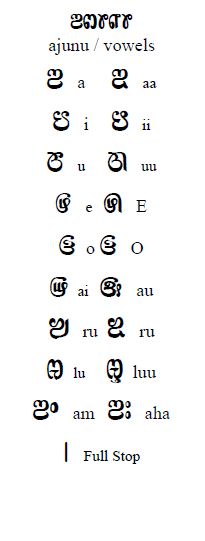Saurashtra language
This article has multiple issues. Please help improve it or discuss these issues on the talk page. (Learn how and when to remove these messages)
|
| Saurashtra | |
|---|---|
 | |
| Region | Tamil Nadu, Karnataka, Gujarat, Maharashtra, Andhra Pradesh, Kerala (India) |
Native speakers | 190,000 (2001 census)[1] |
| Saurashtra, Latin, Devanagari, Tamil | |
| Language codes | |
| ISO 639-3 | saz |
| Glottolog | saur1248 |
Saurashtra is an Indo-Aryan language spoken by the Saurashtrian community of Gujarat who migrated and settled in South India. Madurai in Tamil Nadu has the highest number of people belonging to this community and also remains as their cultural center.
The language is largely only in spoken form even though the language has its own script. The lack of schools teaching Saurashtra script and the language is often cited as a reason for the very few number of people who actually know to read and write in Saurashtra script. Latin, Devanagari or Tamil script is used as alternative for Saurashtra Script by many Saurashtrians. Sourashtrians are ancestrally brahmins by birth.
Census of India places the language under Gujarati. Official figures show the number of speakers as 185,420 (2001 census).[2]
Geographical distribution
Speakers of the Saurashtra language, known as Saurashtrians, maintain a predominant presence in the city of Madurai, in the southern part of Tamil Nadu. Though official figures are hard to come by, it is believed that the Saurashtra population is anywhere between one-fifth and one-fourth of the city's total population.
In the course of migration, Saurashtra people moved in groups and settled in different regions of South India and that caused a slight dialect variation between each group and is noticeable by a Saurashtra speaker when interacting with another group.[citation needed]
Phonology
The phoneme inventory of Saurashtra is similar to that of many other Indo-Aryan languages, especially that of the Konkani language. An IPA chart of all contrastive sounds in Saurashtra is provided below.
| Labial | Dental | Alveolar | Retroflex | Alveopalatal | Velar | Glottal | |
|---|---|---|---|---|---|---|---|
| Voiceless stops |
p pʰ |
t̪ t̪ʰ |
ts |
ʈ ʈʰ |
tʃ tʃʰ |
k kʰ |
|
| Voiced stops |
b bʱ |
d̪ d̪ʱ |
dz dzʱ |
ɖ ɖʱ |
dʒ dʒʱ |
ɡ ɡʱ |
|
| Voiceless fricatives |
s | ʃ | h | ||||
| Nasals | m mʱ |
n̪ n̪ʱ |
ɳ |
||||
| Liquids | ʋ ʋʱ |
l ɾ lʱ ɾʱ |
ɭ | j |
| Front | Central | Back | |
|---|---|---|---|
| High | i | u | |
| Mid | e | ə | o |
| Low | a |
Writing system
Saurashtra script
The letter order of Saurashtra script is similar to other Brahmic acripts. The letters are vowels, consonants, and the compound letters which are formed essentially by adding a vowel sound to a consonant.
Vowels and consonants


Compound letters

Numerals

Vocabulary
Loanwords
The language itself is more similar to modern day Hindi and Marathi. However, in the course of migration to South India, the language was influenced by Dravidian Languages such as Telugu and Kannada and accumulated words from those language in its vocabulary as loanwords.
| English | Saurashtra loanword | Donor-language word |
|---|---|---|
| "Rasam" (Tamarind extract) | Pilchar | Charu (Telugu) |
| Read / Study | Cheduvi | Chaduvu (Telugu) |
| Mirror | Adhham | Adhham (Telugu) |
| Pressed rice | Adkul | Atukulu (Telugu) |
| Rangoli | Muggu | Muggulu (Telugu) |
| Cloth | Bottal | Battalu (Telugu) |
| Gulp/deglutition | Mingi | Miṅgaḍamu (Telugu) |
| Jump | Dumki | Dumuku (Telugu) |
| Scratch | Giktha | Gīkuḍu (Telugu) |
| Vehicle | Bondi/Bandi | Bandi (Telugu/Kannada) |
| Children | Pillan | Pillalu (Telugu) |
| Way | Dhaar | Daar (Telugu) |
| Punch(blow with the first) | Guddhu | Guddhu (Telugu) |
| Sprinkles | Chinkul | Cinukulu (Telugu) |
| Drop | Bottu | Bottu (Telugu) |
| Work | Kaam | Kaam (Telugu/Marathi) |
| Monkey | Kothi | Kothi (Telugu/Kannada) |
| Milk | dhoodh | dhoodh (Hindi) |
| cow | gaaye | gaaye (Hindi) |
See also
References
- ^ Saurashtra at Ethnologue (18th ed., 2015) (subscription required)
- ^ "Census of India 2001: Abstract of speakers' strength of languages and mother tongues". New Delhi, India: The Registrar General & Census Commissioner. Retrieved 2013-12-03.
- ^ Colin Masica, 1993, The Indo-Aryan Languages
